IFA 2016: Examining the Malaise of Bargain Basement Virtual Reality
by Dr. Ian Cutress on September 9, 2016 9:00 AM ESTBargain Basement, 4 + 5 + 6
#4: Shenzhen Winbest Company Limited, VR102 + VR106
The only company to offer two SKUs, even with different designs, was the Shenzhen Winbest Company Limited. The lower end model, the VR102, uses a full 720x1280 5-inch IPS display with Android 5.1 powered by an RK3126 quard (sic) core SoC. This is a Rockchip design, built on a 40nm process, featuring quad ARM Cortex-A7 cores up to 1.3 GHz and a Mali-400 MP2 GPU. The AIO-VR has 1 GB of DDR3L memory and 8GB of storage which can be supplanted with a microSD card. To top it off, there’s a 2600 mAh battery.
The design for the VR102 is a white chassis with a black face plate, with the system using a directional pad on the top with a separate four buttons for power, menu, and plus/minus. The headset uses a breathable foam/leather mix, and suffers the same face as the other headsets so far.
The upgraded model uses the same Rockchip RK3288 as the first AIO-VR in this list, but the screen is listed as a 2560x1440 display at 5.5-inches combined with a 2GB/16GB memory and storage configuration. The Nibiru OS makes another showing here, and the battery is updated to 4000 mAh. The design is aimed to be a little bit more polished than the lower grade headset, with an integrated HDMI input (or is that output?).
The VR106 had separate IPD adjustments on the bottom of the headset, along with what seems to be the usual array of outputs.
#5: EyeSun Technology Company Limited
No basic details or specifications on this one, aside from the 2600 mAh battery and a 4 hour rated lifespan. It only had one image around the booth about the hardware and the representative couldn’t tell me anything apart from ‘it’s still a prototype’. The look was interesting, so I snapped a few images.
This is no IPD adjustment on these, as we have the same foam/breathable padding around the face with a big gap for the nose. Button placement was on the bottom, showing a directional pad, buttons to switch from 2D to 3D, a microSD card slot, a USB port, a 3.5mm jack, and what looks like a micro-HDMI port.
#6: Hena Digital Technology (Shenzhen) Company Limited VR501
Another device that in many ways mirrors the first one on this list. Under the hood is a Rockchip RK3288, meaning quad-core A7s up to 1.8 GHz and Mali T760MP4 graphics, which is combined with a 1920x1080 IPS screen, Android 5.1, and a WiFi module capable of 802.11n at 2.4 GHz.
Also similar to the first, we got a sense of pricing. I was told that a single sample is $102, with price scaling based on order quantities.
However, there is no IPD adjustment on this headset, but at least the nose area is semi-sealed from the light. This one was actually working and had the Nibiru OS preloaded. The screen was very laggy, and it was clear from even basic motion it was going to cause a large deal of discomfort. These AIO-VRs are clearly for base content consumption, and anything moving is just a bad experience.


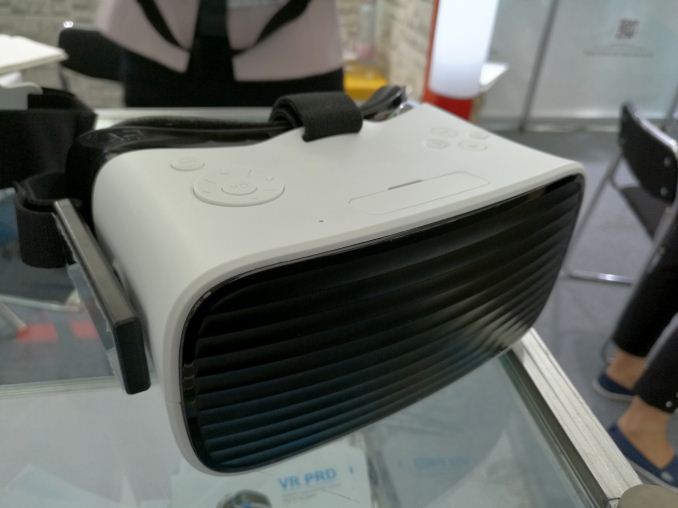
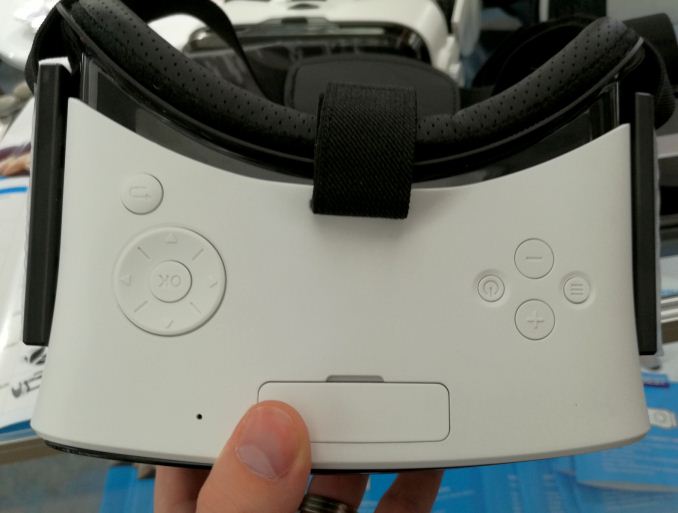
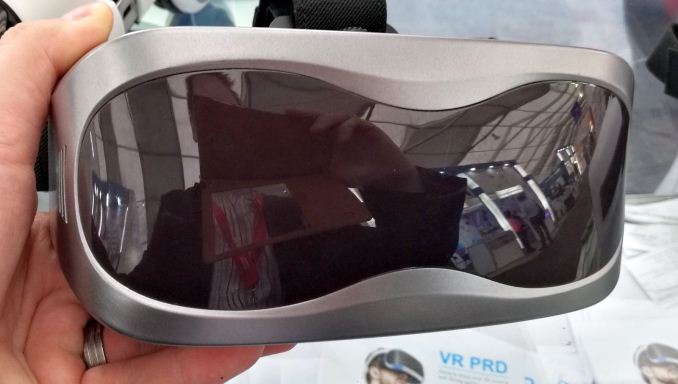
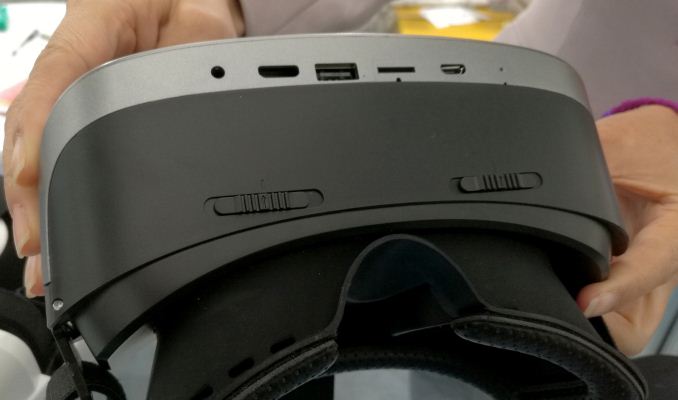
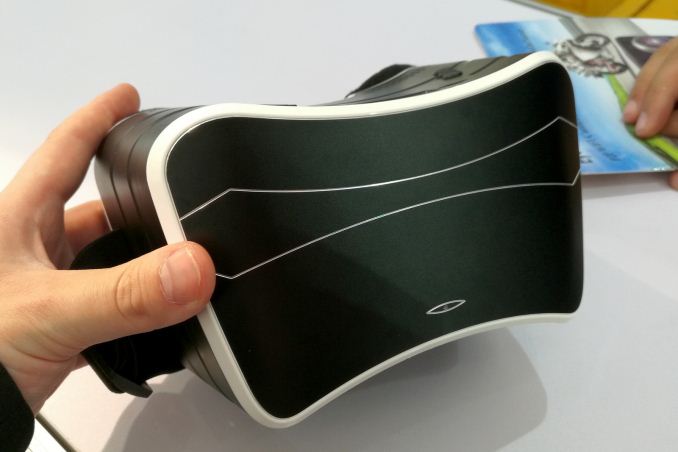

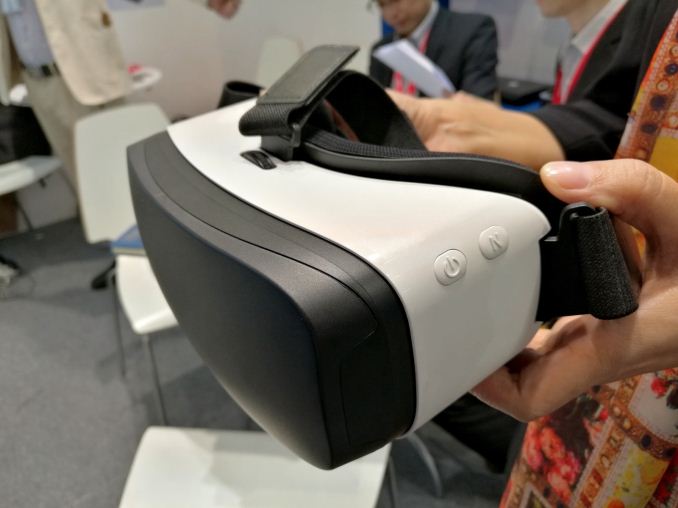
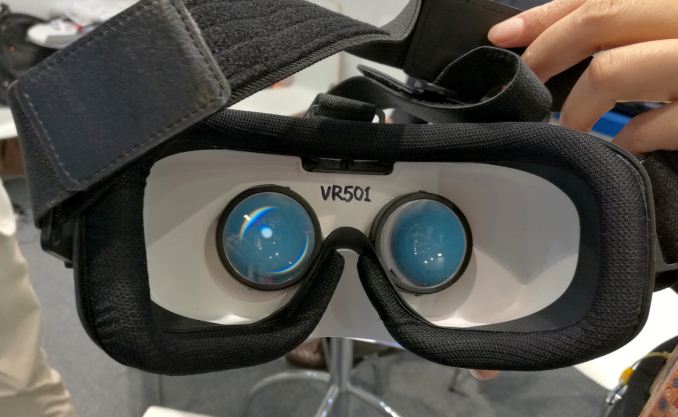








59 Comments
View All Comments
cocochanel - Saturday, September 10, 2016 - link
You could get a decent PC capable of VR for under a $1000. Say, a Zen + RX480 + 8Gigs RAM + SSD. Throw in an Oculus Rift for $600 and you're looking at around $1500. Where do you guys came up with the $3000 figure ? I suspect is the Nvidia camp who still insist that VR should start with a GTX 1080. C'mon.Death666Angel - Saturday, September 10, 2016 - link
Zen isn't out yet. Otherwise, yes, 3k is ridiculously overpriced for getting a VR ready setup.Icehawk - Saturday, September 10, 2016 - link
From testing I have seen online a 480 isn't close to enough firepower for VR at present the 1080 appears to be adequate and the Titan X is really the best option - and if VR takes off (it won't) even that hardware will likely be weak within a relatively short time frame. But I would agree $3k is being a bit generous, closer to 2k in reality with a 1080.Death666Angel - Saturday, September 10, 2016 - link
I haven't seen the same stuff as you then. All I read was in support of RX 480 being good enough for VR at this point in time. I don't argue that "more is better", but the benchmarks (Steam VR, people playing VR games @ 90fps) I have seen of the RX 480 and the minimum requirements of Oculus and HTC Vive point to the RX 480 being a good card for a VR ready PC. Any links would be appreciated. It's still tough to get dedicated VR tests from reliable websites. :)cptnjarhead - Thursday, September 15, 2016 - link
http://www.hardocp.com/article/2016/08/11/amd_nvid...From what i have read on hardocp VR reviews, the 480 has reprojection issues. Not sure if its DX11 related or not. But AMD needs to get it fixed cause right now the nvidia 1080 seems to be the only true "premium VR experience" . Not sure where all this liquid VR support is, but we are not seeing it.
Nagorak - Saturday, September 17, 2016 - link
The problem is UE4. It runs like crap on AMD hardware and it's not clear whether Epic is going to try to fix it, or if they're just going to laugh all the way to the bank where they cash nVidia's check.Half the games in VR are UE4. And, yes this hinders the experience on AMD immensely.
Nagorak - Saturday, September 17, 2016 - link
However there are still many games that do run alright on AMD. More horsepower is definitely better in VR, and that plus gimped UE4 means the best experience is sadly an Nvidia 970 and up. 290/390/480/X are still viable for many games but the experience suffers thanks largely to UE4.serendip - Saturday, September 10, 2016 - link
Cheap VR means no VR, at least for me. I've had enough of getting dizzy and vomiting after less than a minute of cheap Chinese VR "rides" that combine horrible low resolution displays and nausea-inducing movies with fast motion. All it takes is a few seconds of the eyes, inner ear and brain not syncing before lunch/dinner comes back up.I've also tried the Rift and Vive headsets. They're much more comfortable to wear and play on but the system cost and low overall resolution mean they're for hardcore gamers only for now.
Death666Angel - Saturday, September 10, 2016 - link
Using my hacked VRidge/Riftcat VR headset with 3D glasses (currently Fiit VR 2N) and my Nexus 6 works fairly well for 10 minutes (haven't bought the full version of the software yet and it only allows 10 minutes sessions in the free version). I can make myself sick by doing weird stuff in an Android roller coaster app though.Personally, I would need least 1080p 75Hz 5 - 5.5" with a gyroscope and a comfortable fit at under 200USD to consider this. The stuff I saw was either lacking too many features (resolution, tracking, refresh rate) or was too expensive (DK2 clone Deepoon E2 costs basically a little less than a used DK2 here, which is too much for me to consider a knock off).
DominionSeraph - Sunday, September 11, 2016 - link
"For the show this year"For what show?
You shouldn't write as though we've been following you around.